Andy Warhol collides with William Morris in a typically radical new show from artist Jeremy Deller
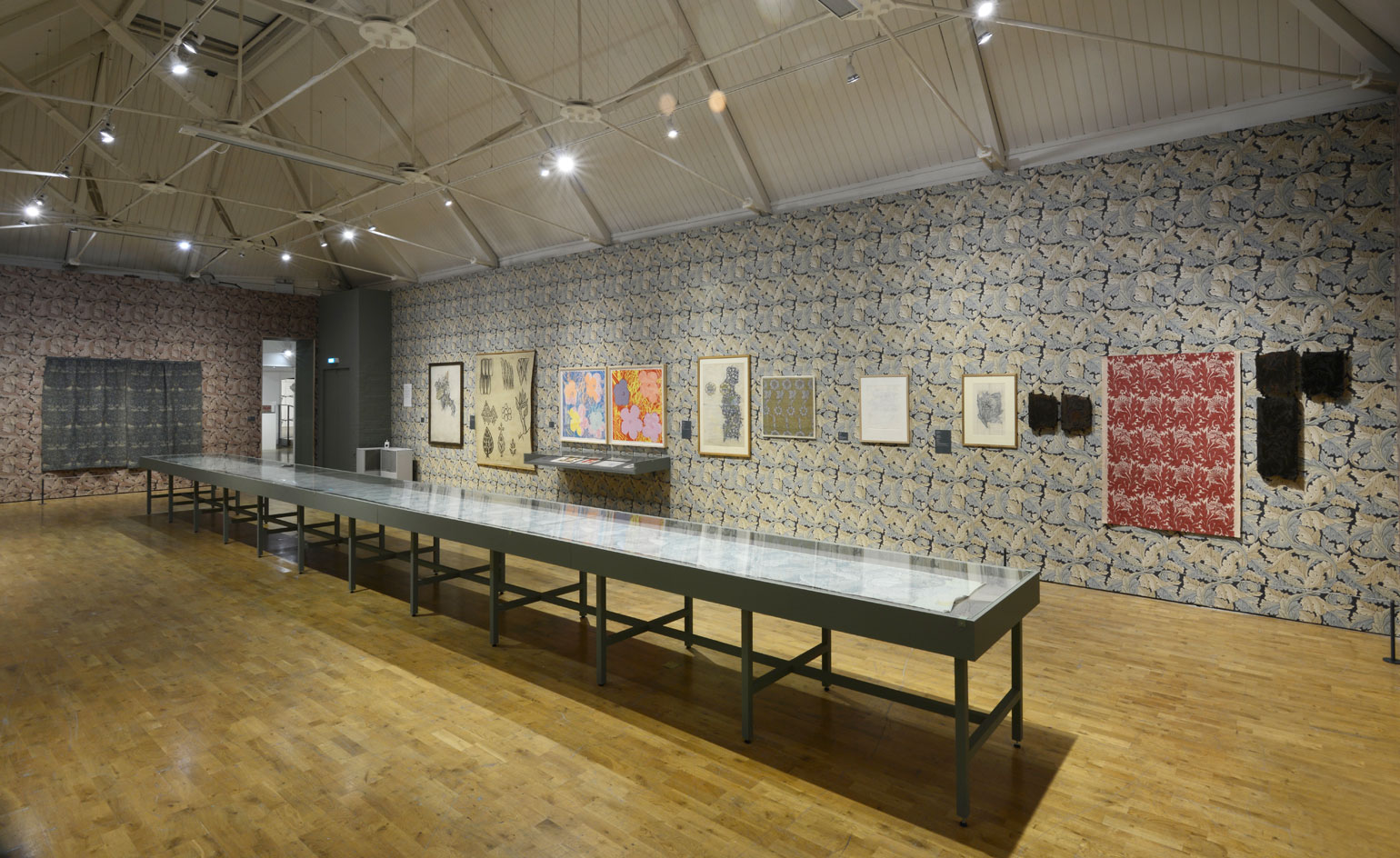
Picture old William Morris, grave and bearded, wearing the floppy white wig of Andy Warhol, or a pair of his trademark Miltzen sunglasses. It's an image of the sort that could have come out of Warhol's Factory, the mythical Manhattan space in which he collaborated with his coterie of artists and celebrity muses and where he crafted his legendary silkscreens.
The image doesn't exist, of course, but it symbolises the juxtaposition Jeremy Deller, another artistic prankster, wishes to highlight in 'Love is Enough', the newly opened exhibition he's curated at Modern Art Oxford.
In plucking rarely-seen works by Morris and Warhol, Deller has drawn comparisons between the two luminaries, despite the nearly 100-year gap between their careers. Both led significant artistic movements during which they collaborated with close-knit groups of artists, living communally for long stretches (both rejected the capitalistic styles of their day). And both were wildly successful in their time, widely imitated by some yet misunderstood by others.
Deller, a collaborator extraordinaire and Turner Prize-winner who began his career with a summer 'internship' at the Factory, has set them up in parallel over the dedicated space in Oxford. There are Morris' engravings, wallpapers and booklets, products of the artist's innovations in printing and distribution in the early years of mass production - and initiatives to get art into the hands of the middle classes.
On the other side is a photograph of Warhol holding a giant acetate from his famous Marilyn series of silkscreens, along with a 1985 Joan Collins, at the height of her Dynasty fame - critiques of the 20th-century culture of mass manufacturing. Warhol's 1970 'Flowers' screen print, albeit tenuously linked to Morris's floral-repeat textiles, is nonetheless evidence of the artist's commitment to the long tradition of floral painting.
In one room, segments of Morris tapestry featuring the Arthurian knights Sirs Galahad, Bors and Percival spying the Holy Grail demonstrates his attention to traditional craft and detail. It looks across to a rare 1968 Warhol tapestry of Marilyn Monroe, meticulously hand-produced by artists at the Charles E Slatkin Galleries, and displayed here for the first time in a public museum. The suggestion is that Warhol's (still strong) brand is a natural continuation of the brand Morris established in the late 19th century.
Deller famously said, 'I don't make things, I make things happen.' Yet to celebrate the launch of 'Love is Enough', he did right by his fans. For our December issue (see W*189) he designed our limited edition cover - available to subscribers - with Fraser Muggeridge studio, combining Frederick Holler's 1884 photograph of William Morris with a Warhol-inspired camouflage (its strapline, 'Get mumbo-jumbo out of the world', is based on Morris' dying words). He's also produced a limited edition artwork, hand printed on four different neon papers at Morris' famous Kelmscott Press. Until 31 December 2014, Wallpaper* is offering 50 copies to readers, at a discount price of £75. To secure a print, contact Modern Art Oxford.
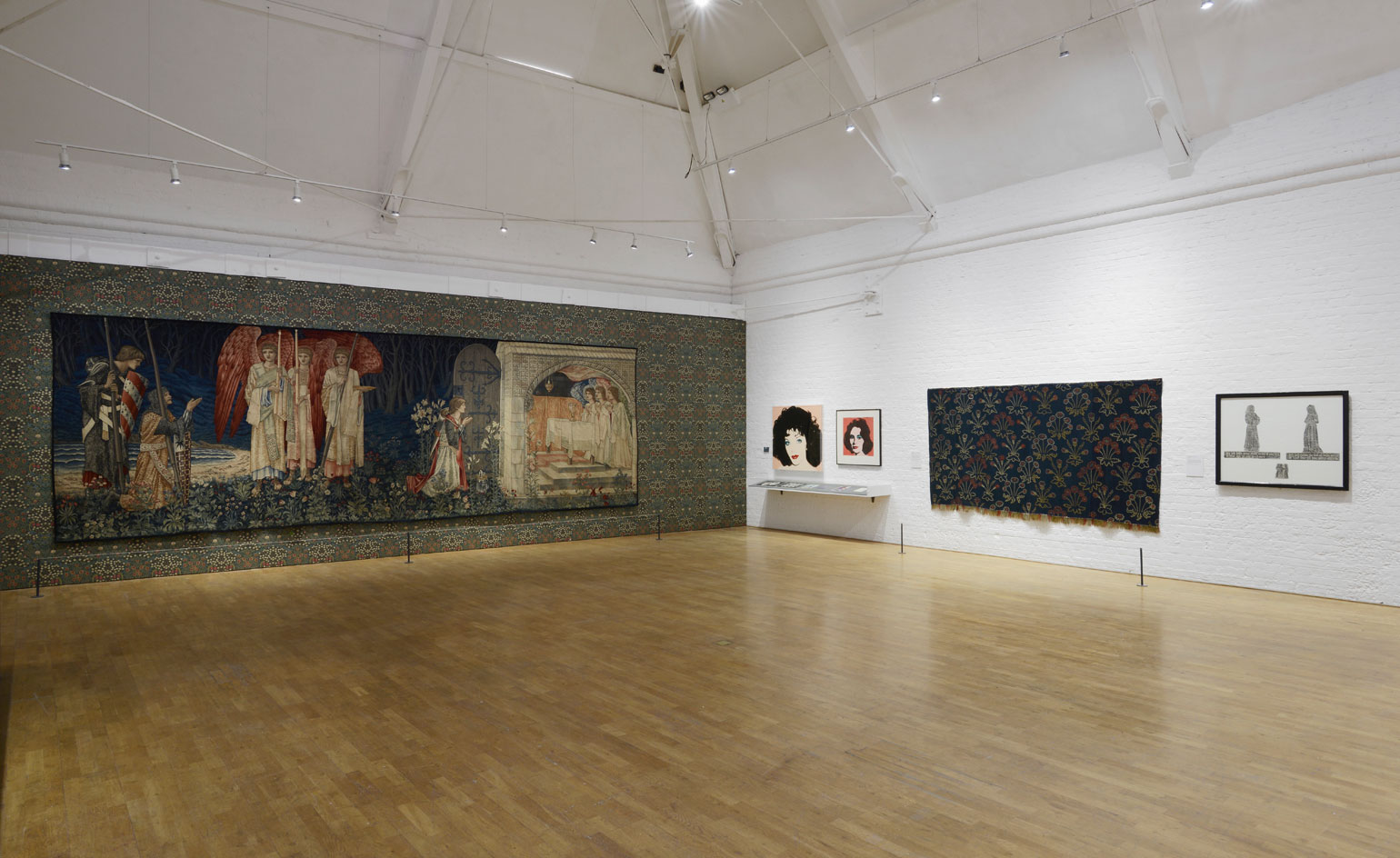
Curated by artist Jeremy Deller, the show brings together the work of William Morris and Andy Warhol. In plucking rarely-seen works by Morris and Warhol, Deller has drawn comparisons between the two luminaries, despite the nearly 100-year gap between their careers. © Modern Art Oxford.
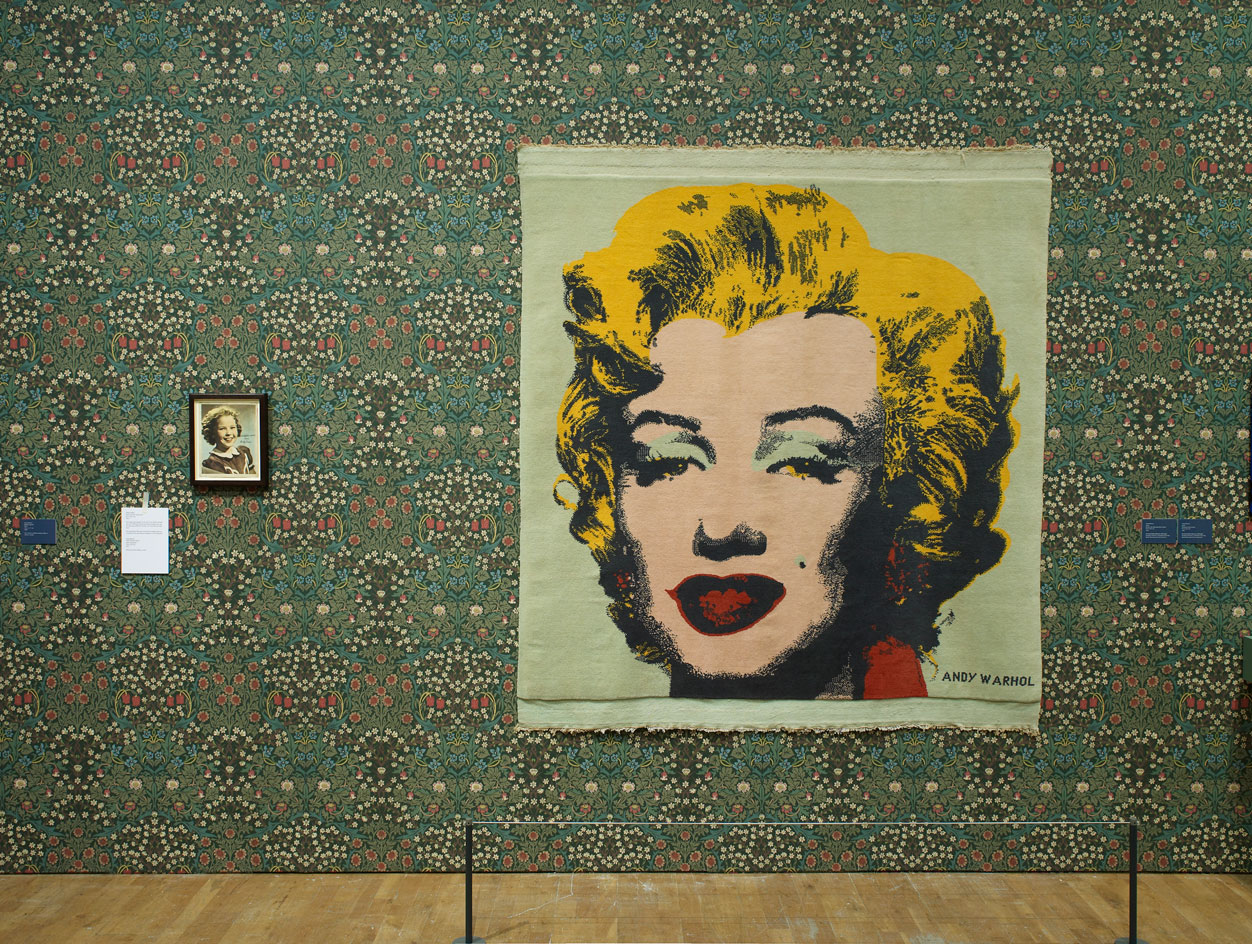
One of the strangest objects in the exhibition is the signed photo of a young Shirley Temple (left), sent to a rather sickly Warhol in 1941. It hangs juxtaposed with a rare 1968 Warhol tapestry of Marilyn Monroe, meticulously hand-produced by artists at the Charles E Slatkin Galleries, and displayed here for the first time in a public museum. © Modern Art Oxford.
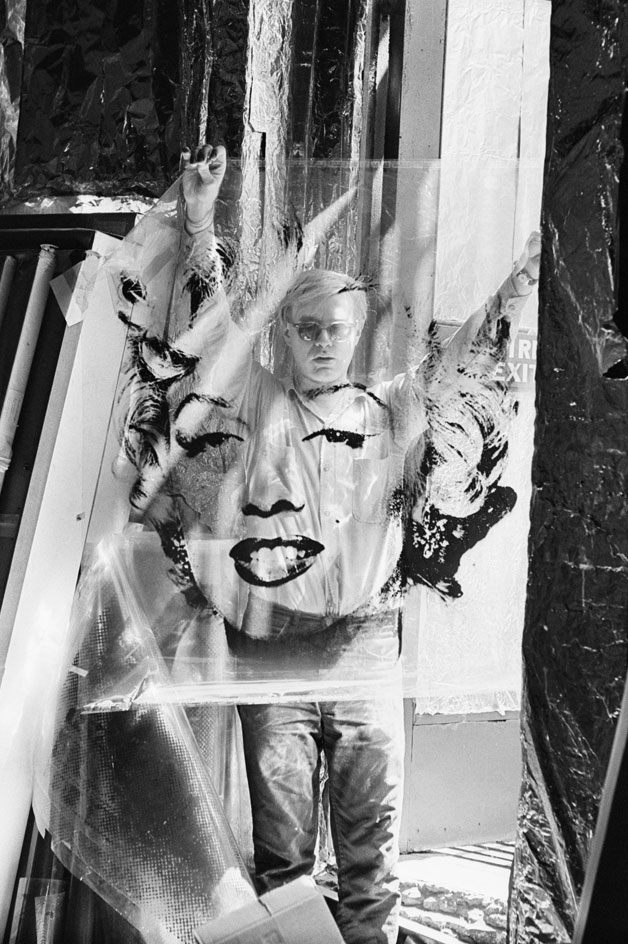
Warhol in 1964 holding the 'Marilyn' acetate used to make his famous 40” paintings, known as the 'Shot Marilyns', at the doorway of the fire escape at the Factory on East 47th Street.
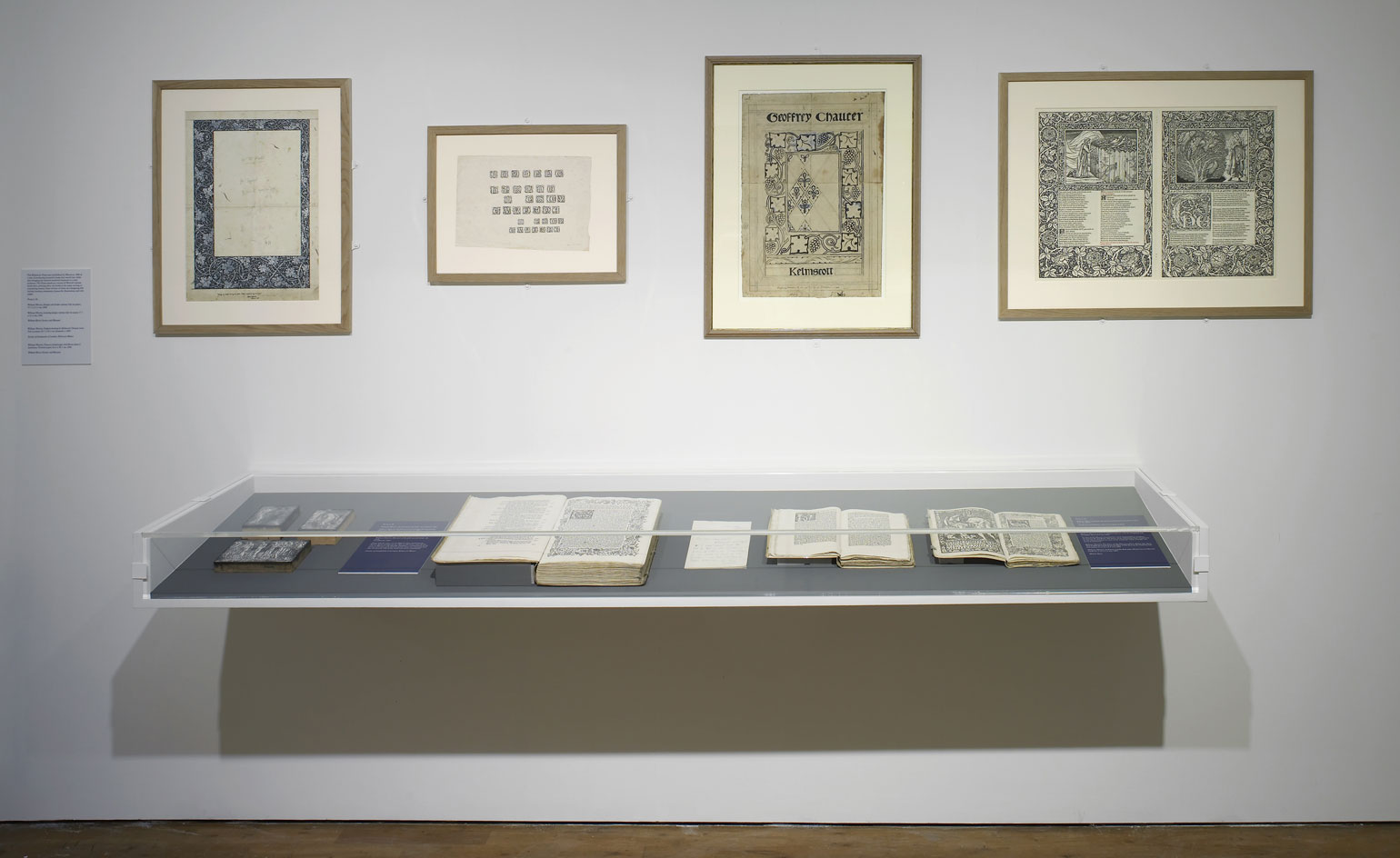
There are Morris' engravings, wallpapers and booklets, products of the artist's innovations in printing and distribution in the early years of mass production - and initiatives to get art into the hands of the middle classes. © Modern Art Oxford.

‘How I Became a Socialist’ (K599), by William Morris, published by the 20th Century Press, bound copy, undated.
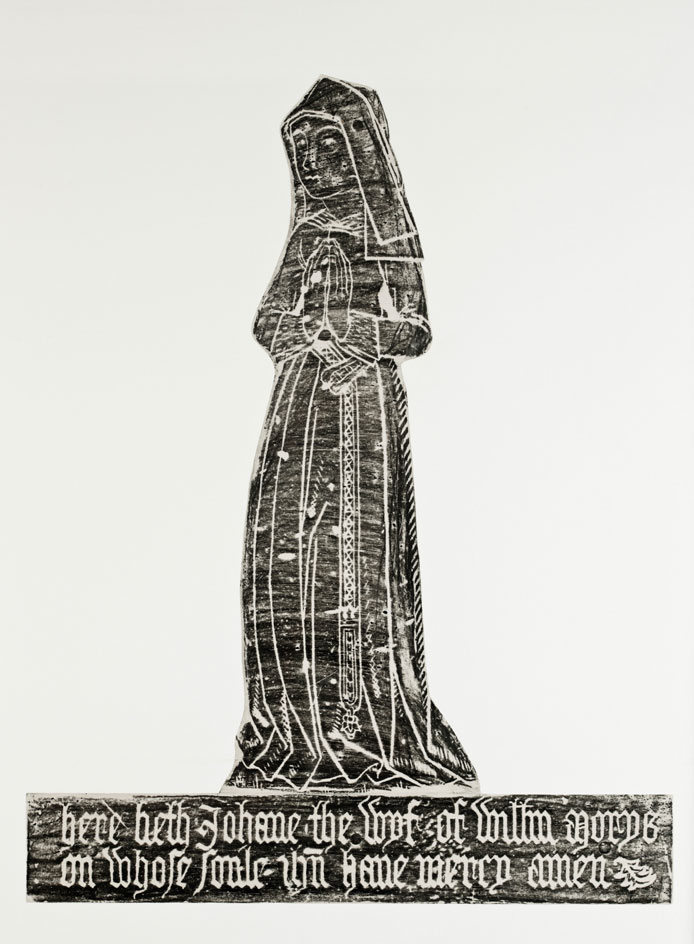
'Brass rubbing from Great Coxwell Church (KM305)', by William Morris, undated.
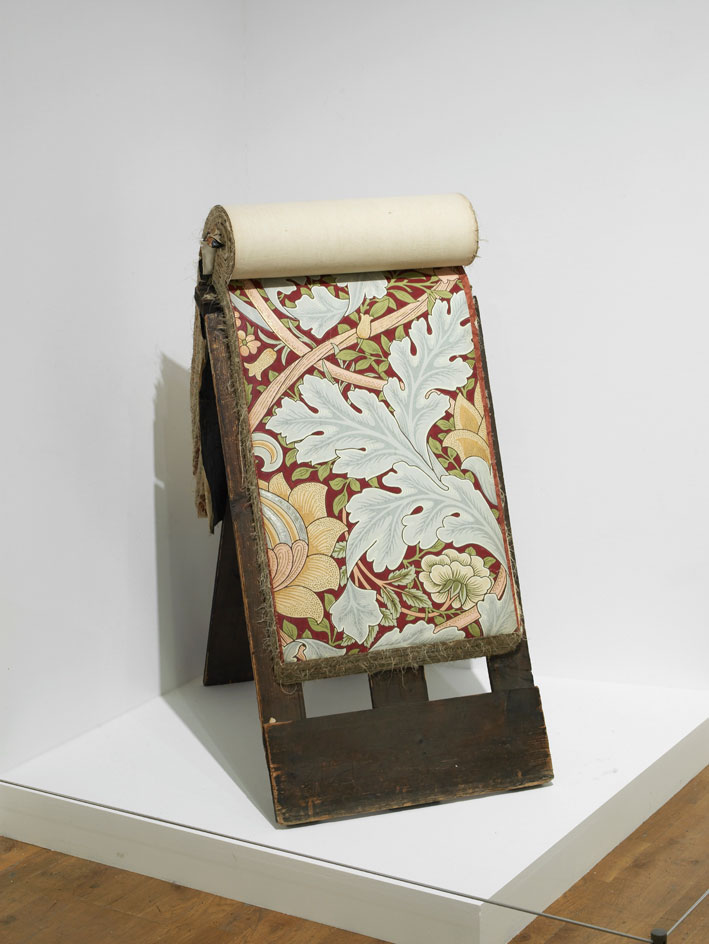
Morris & Co's 'Stand Book' from its Hanover Square showroom. Courtesy of Morris & Co. © Modern Art Oxford.
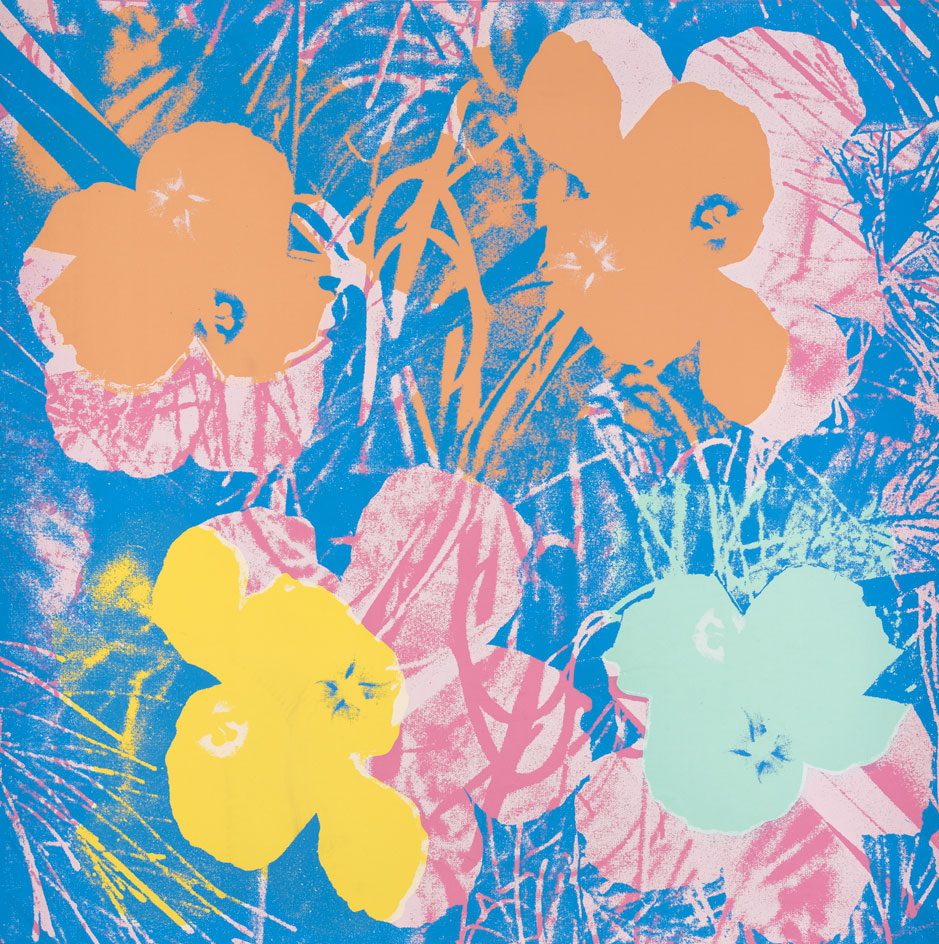
Warhol's 1970 'Flowers' screen print, albeit tenuously linked to Morris's floral-repeat textiles, is evidence of the artist's commitment to the long tradition of floral painting.

'The Story of Tristram and Isoude', by Morris, Marshall, Faulkner & Co, 1862. Panel 13, named 'King Arthur and Lancelot', designed by William Morris.
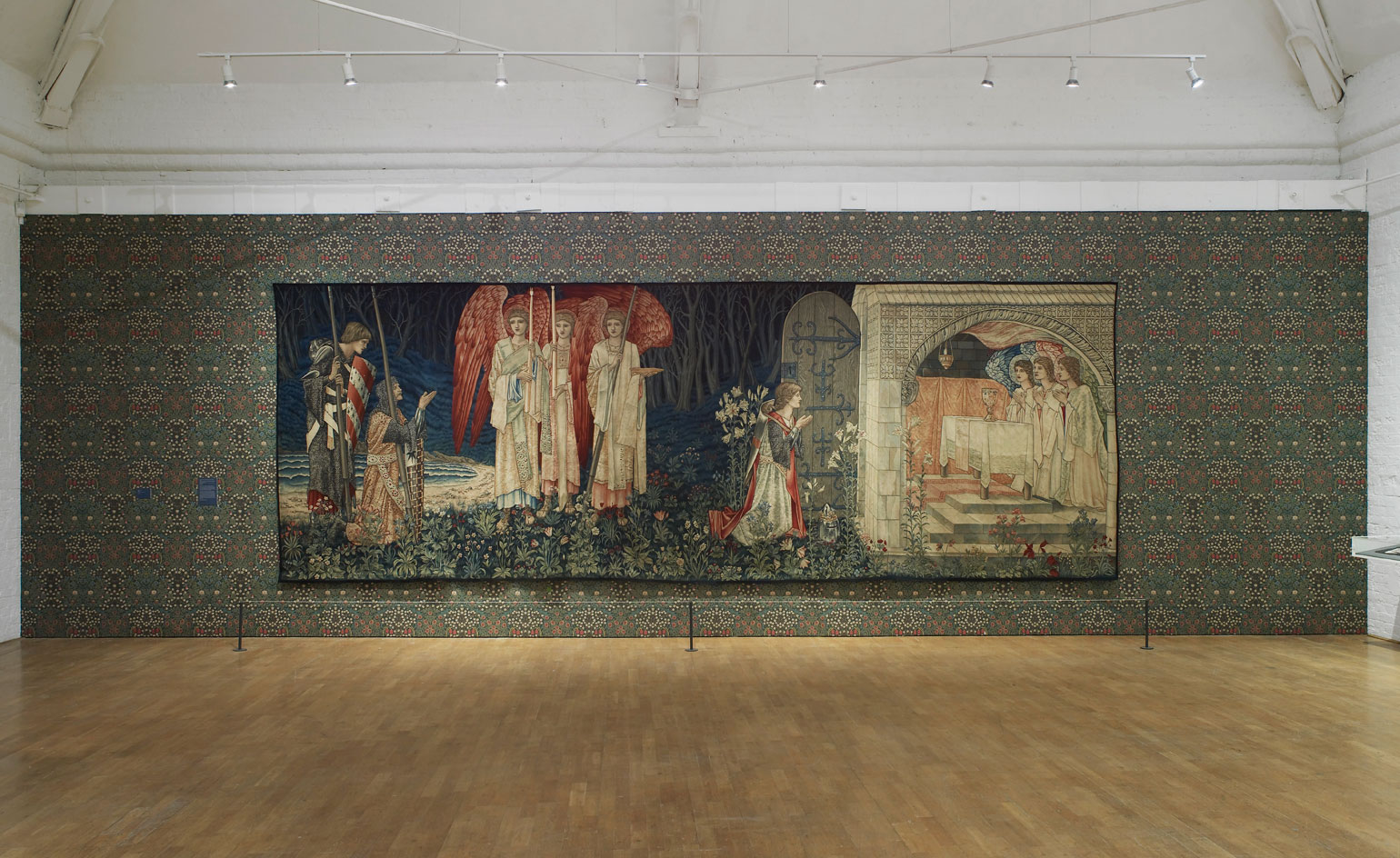
In one room, segments of Morris tapestry featuring the Arthurian knights Sirs Galahad, Bors and Percival spying the Holy Grail demonstrates his attention to traditional craft and detail. © Modern Art Oxford.
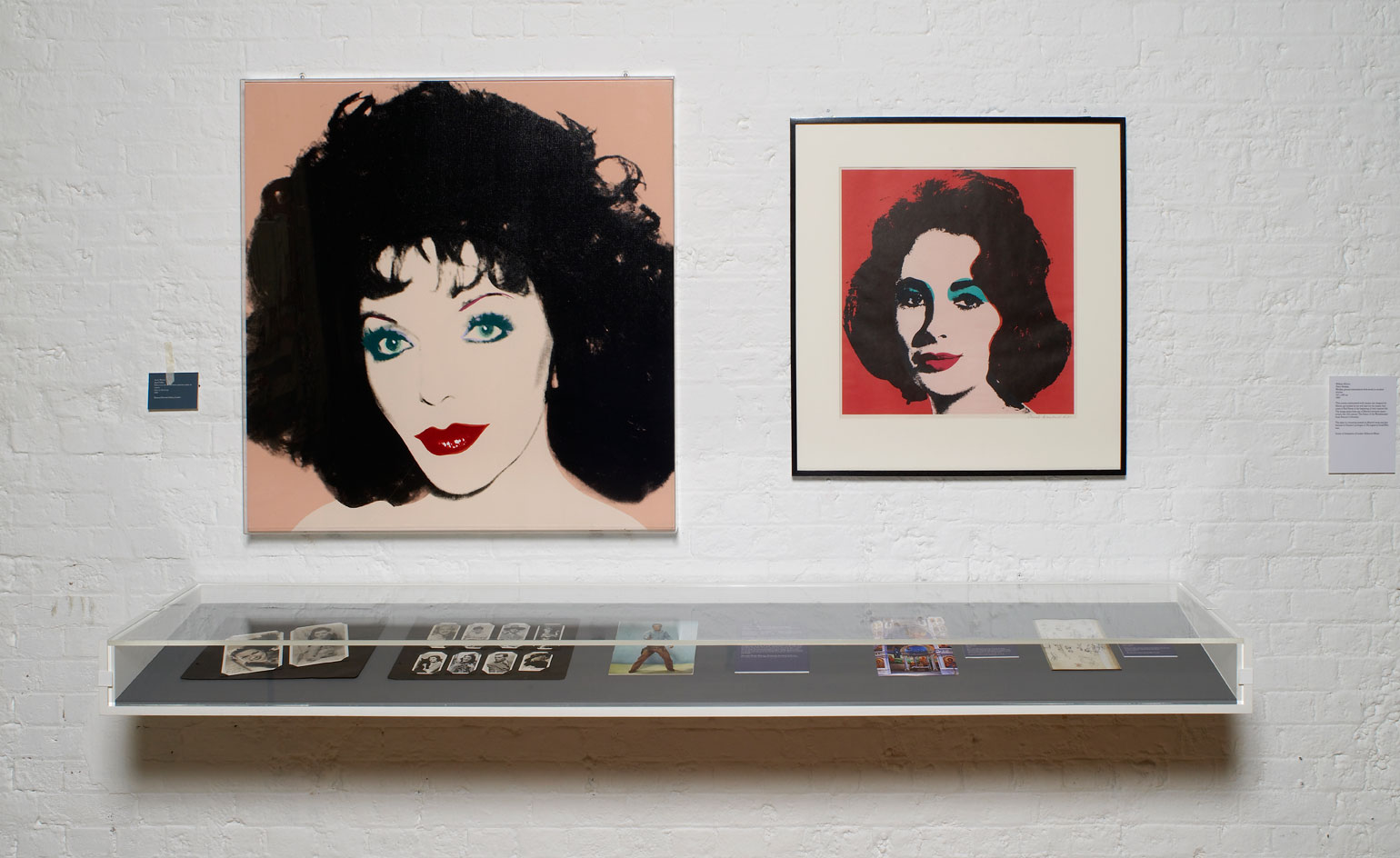
On the other side is a 1985 Joan Collins (left), at the height of her Dynasty fame, paired with a portrait of Dame Elizabeth Taylor - critiques of the 20th-century culture of mass manufacturing. © Modern Art Oxford.
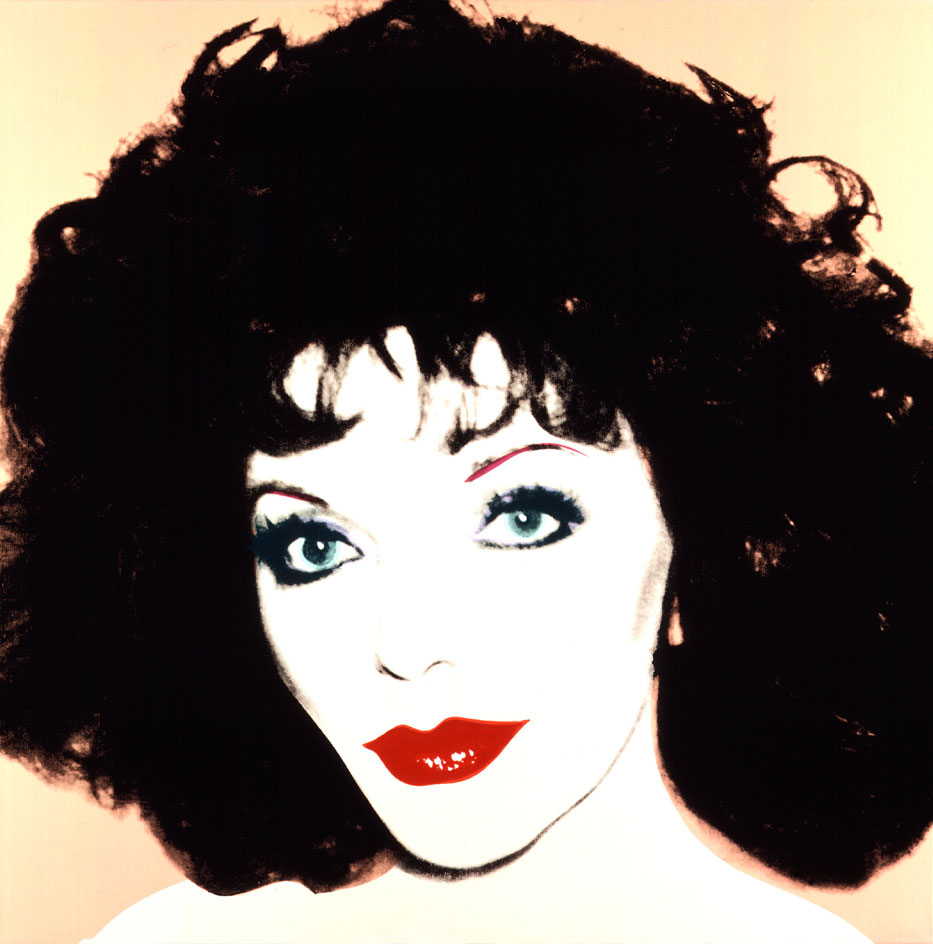
'Joan Collins', by Andy Warhol, 1985.
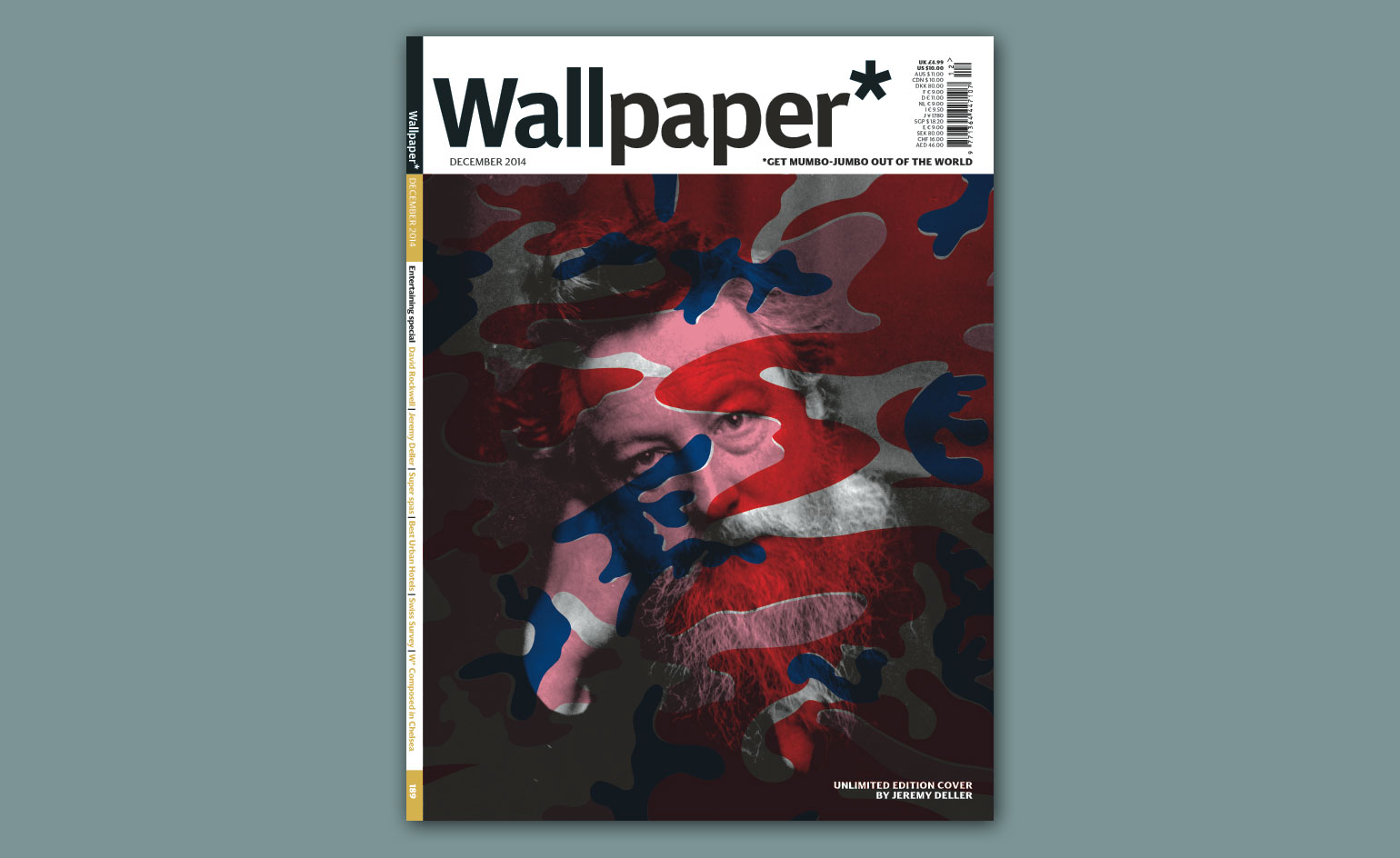
For our December issue (see W*189), Deller designed our limited edition cover - available to subscribers - with Fraser Muggeridge studio, combining Holler's 1884 photograph of Morris with a Warhol-inspired camouflage (its strapline, 'Get mumbo-jumbo out of the world', is based on Morris' dying words)
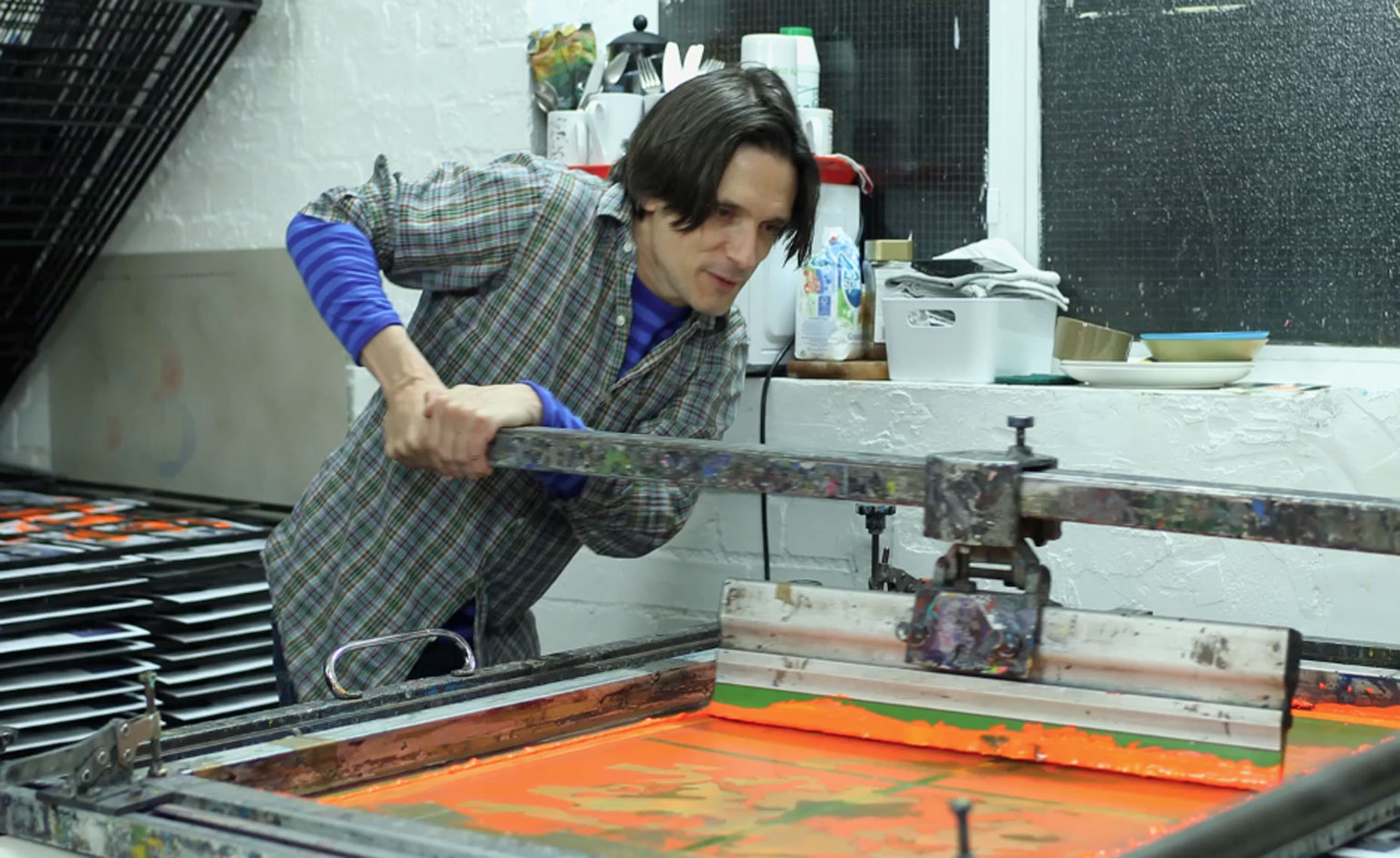
3925608265001
Deller's also produced a limited edition artwork, hand printed on four different neon papers at Morris' famous Kelmscott Press. Watch our film to take a peek behind the scenes of the production process
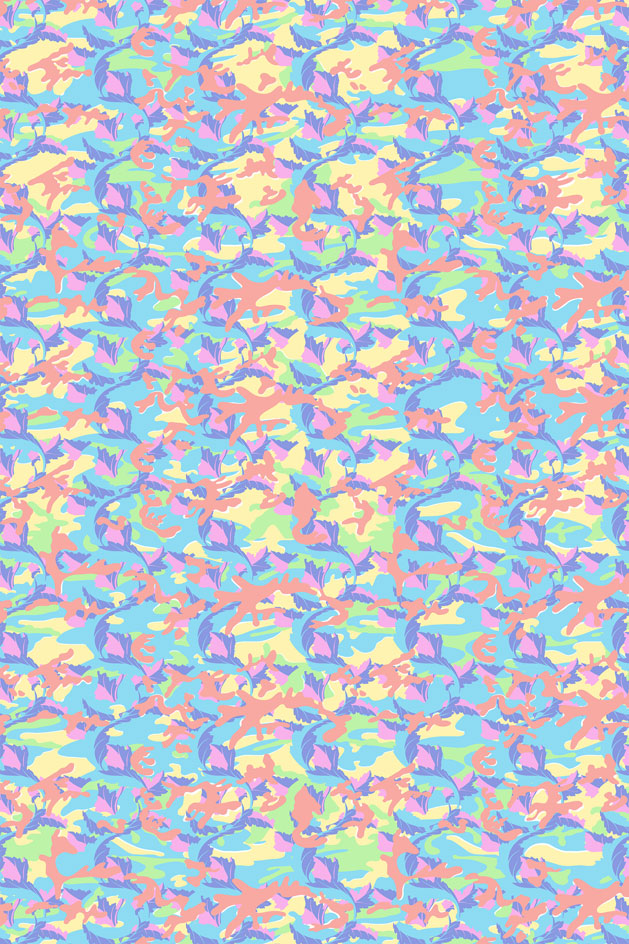
'Love is Enough' pattern, by Jeremy Deller and Fraser Muggeridge studio, 2014.
ADDRESS
Modern Art Oxford
30 Pembroke St
Oxford OX1 1BP
Receive our daily digest of inspiration, escapism and design stories from around the world direct to your inbox.
Based in London, Ellen Himelfarb travels widely for her reports on architecture and design. Her words appear in The Times, The Telegraph, The World of Interiors, and The Globe and Mail in her native Canada. She has worked with Wallpaper* since 2006.
-
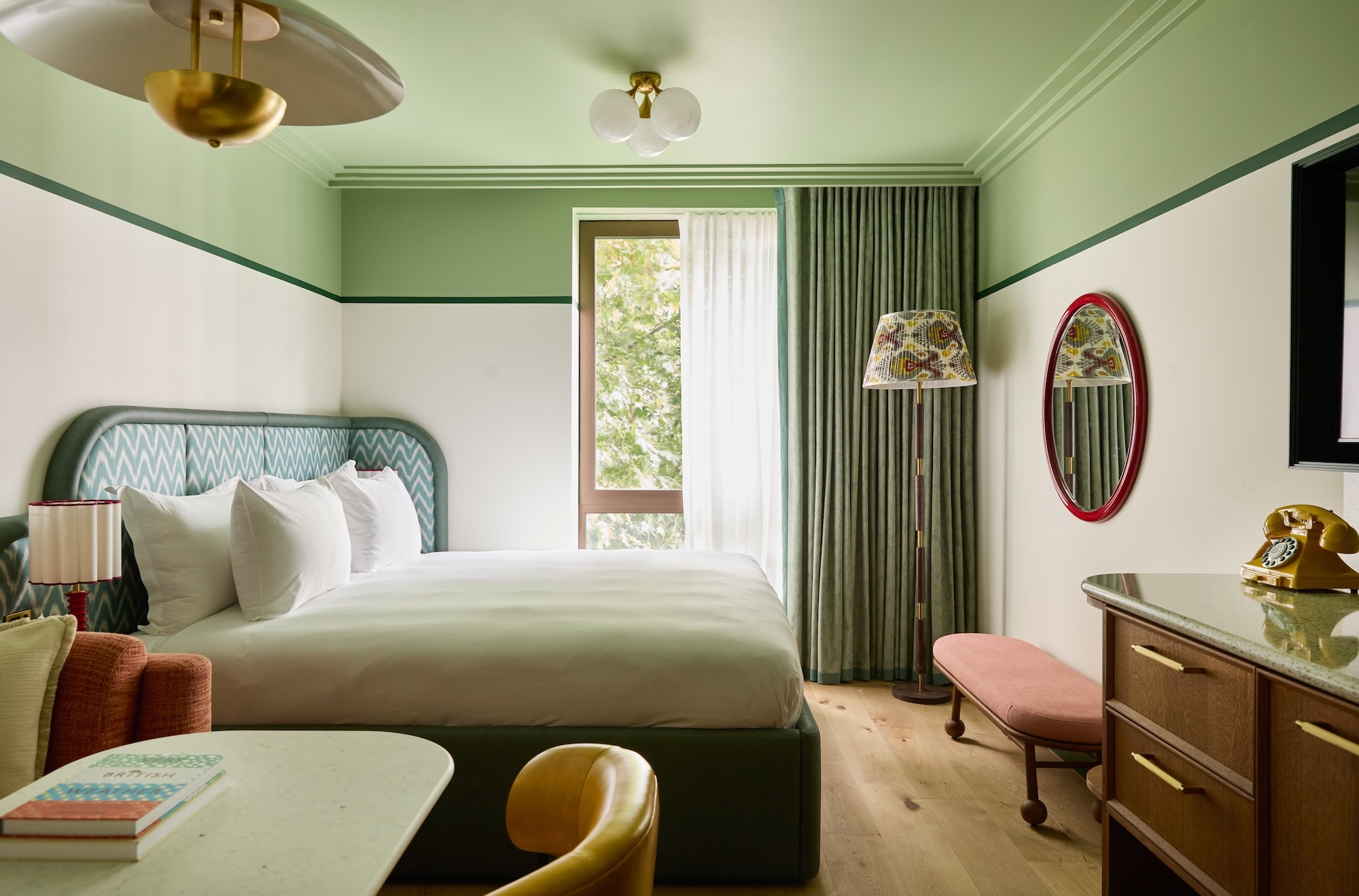 At last: a London hotel that’s great for groups and extended stays
At last: a London hotel that’s great for groups and extended staysThe July London Victoria, a new aparthotel concept just steps away from one of the city's busiest rail stations, is perfect for weekends and long-term visits alike
-
 Three new smartwatches showcase new frontiers in affordable timepiece design
Three new smartwatches showcase new frontiers in affordable timepiece designLong may you run: smartwatches from Withit, Kospet and OnePlus favour function and value above all else, demonstrating just how much the smartwatch has evolved in recent years
-
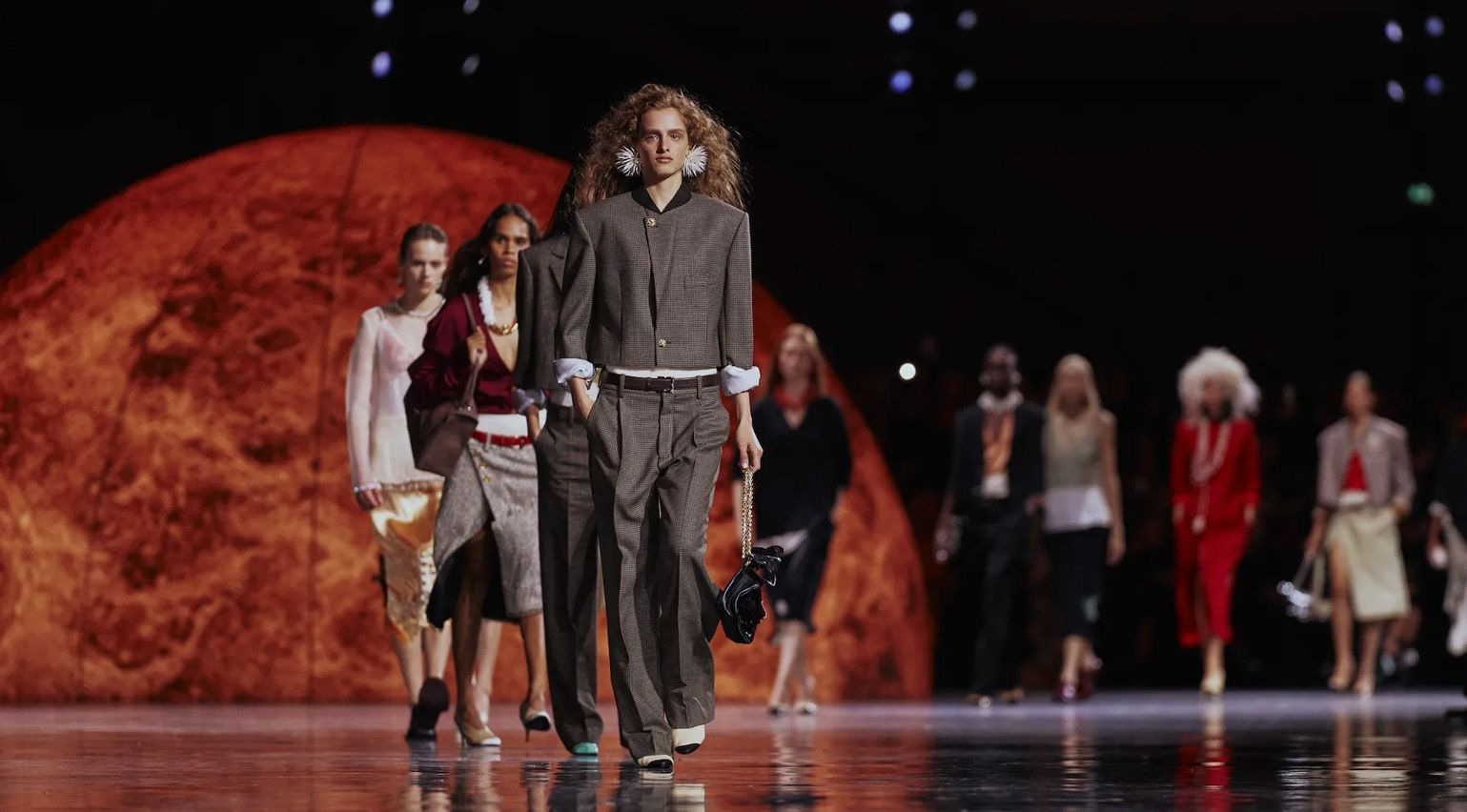 Debuts, dandies, Demi Moore: 25 fashion moments that defined 2025 in style
Debuts, dandies, Demi Moore: 25 fashion moments that defined 2025 in style2025 was a watershed year in fashion. As selected by the Wallpaper* style team, here are the 25 moments that defined the zeitgeist
-
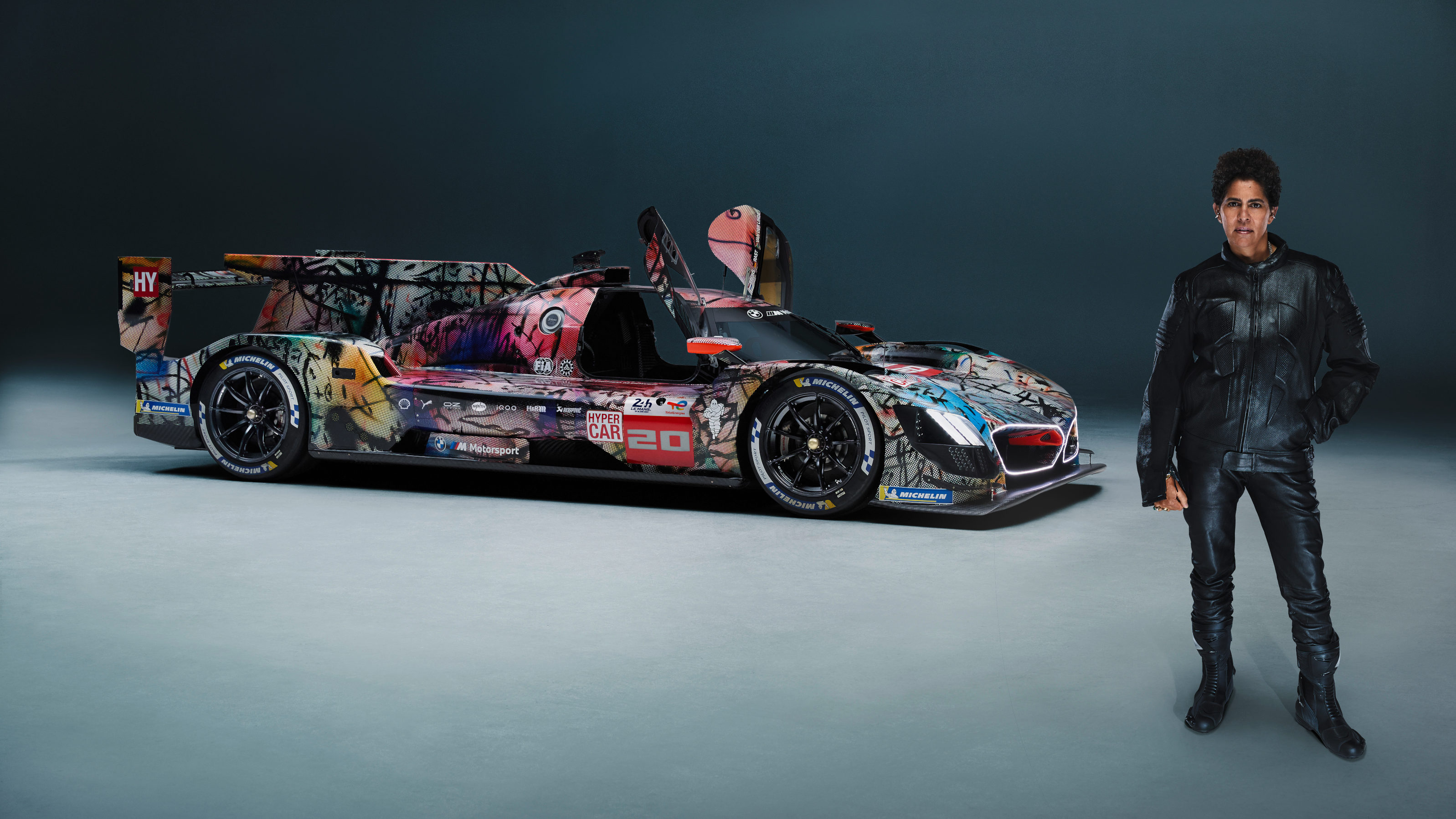 Julie Mehretu is the latest artist to transform a BMW racing car into a dynamic artwork
Julie Mehretu is the latest artist to transform a BMW racing car into a dynamic artworkThis is the 20th BMW Art Car, a BMW M Hybrid V8 racecar that’ll take to the track at Le Mans with a livery created by artist Julie Mehretu
-
 Richard Bernstein's bold covers for Andy Warhol's 'Interview' magazine go on show in New York
Richard Bernstein's bold covers for Andy Warhol's 'Interview' magazine go on show in New YorkBernstein's portraits of stars, including Cher, Stevie Wonder, Fran Lebowitz, Mick Jagger and Grace Jones can be seen at Neuehouse, Manhattan.
-
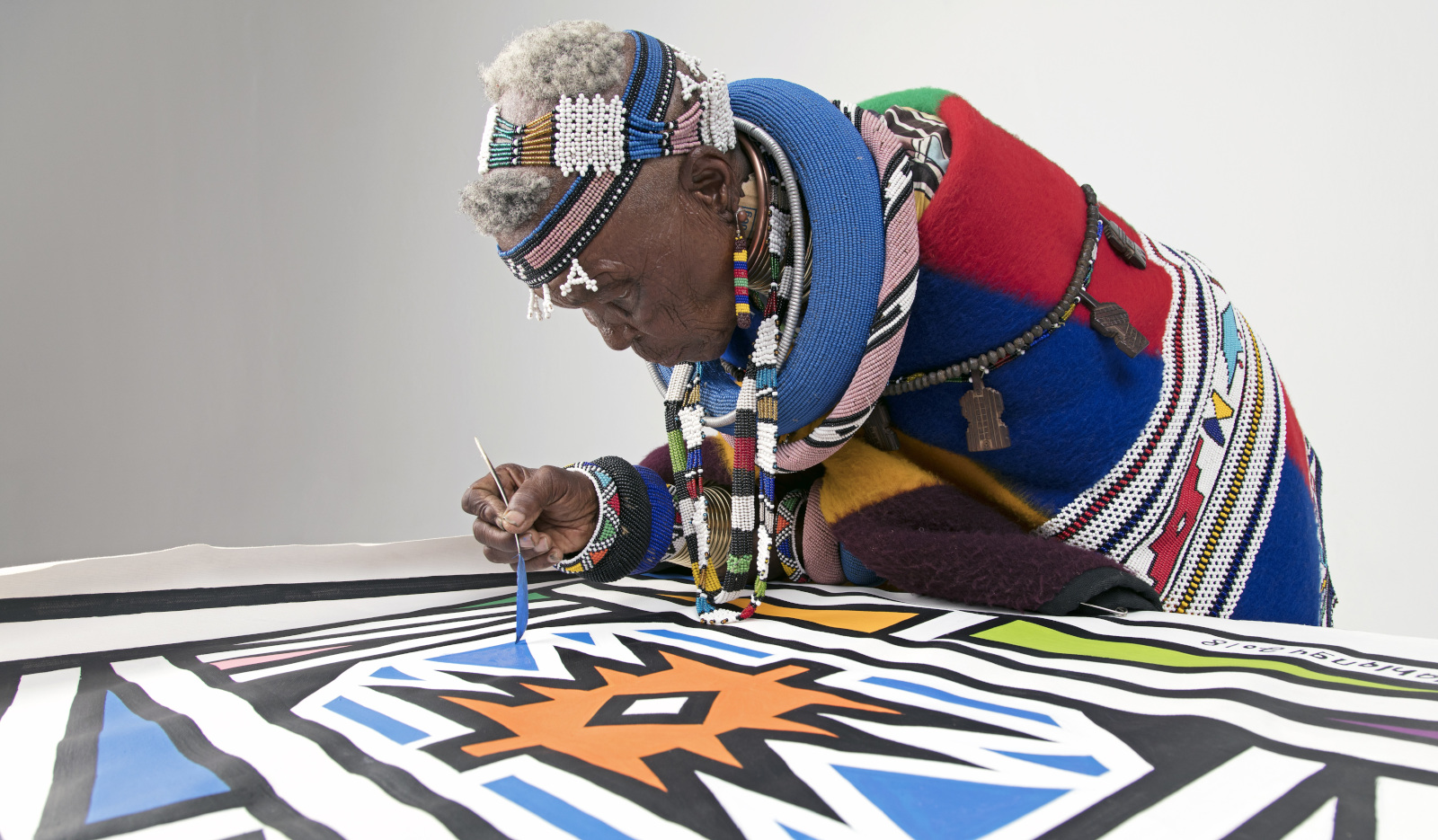 Esther Mahlangu’s first retrospective features the iconic BMW 525i Art Car
Esther Mahlangu’s first retrospective features the iconic BMW 525i Art CarEsther Mahlangu showcases ‘Then I knew I was good at painting’ at the Iziko Museums of South Africa in Cape Town
-
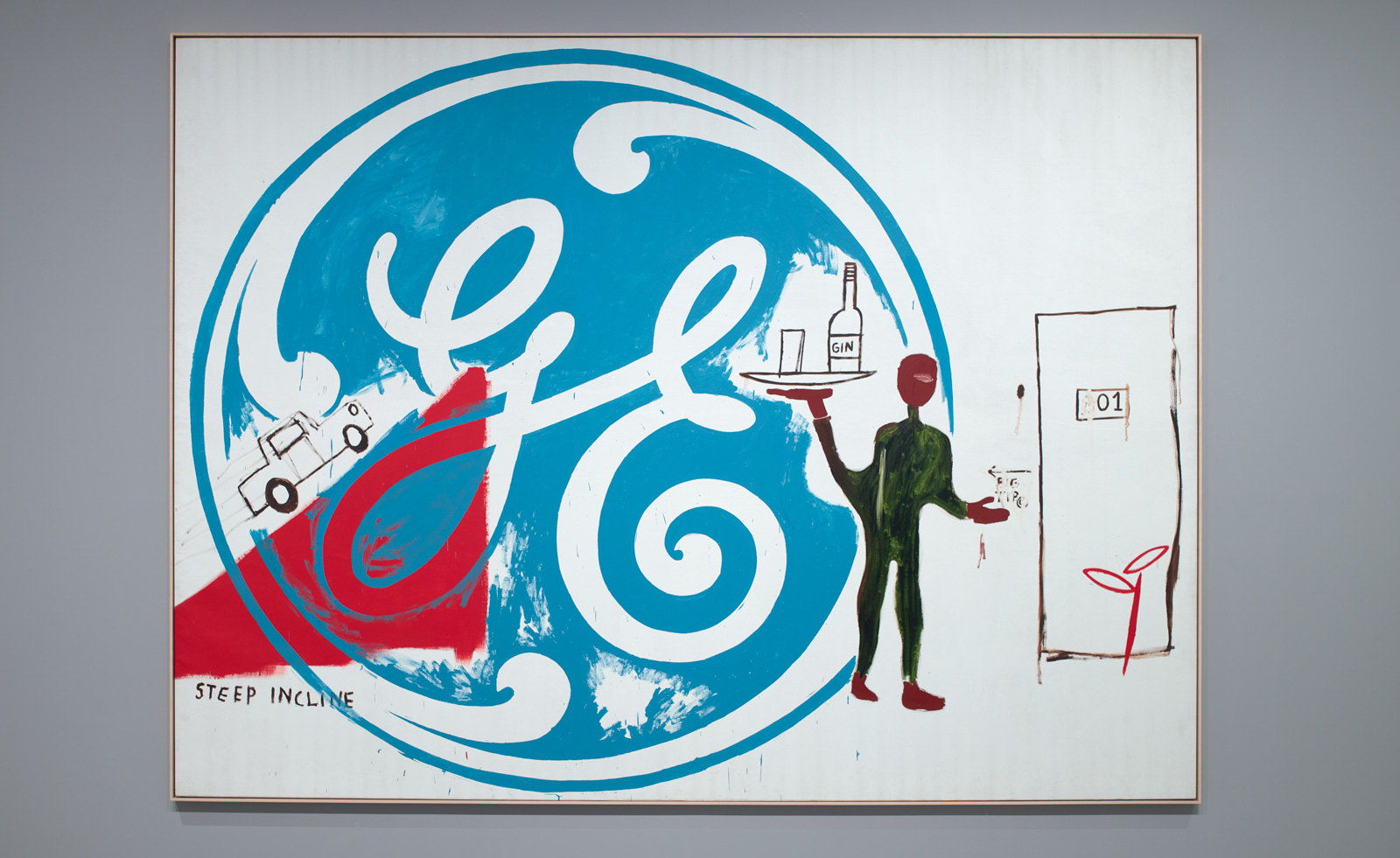 Jean-Michel Basquiat and Andy Warhol’s fruitful partnership explored in Paris
Jean-Michel Basquiat and Andy Warhol’s fruitful partnership explored in ParisFondation Louis Vuitton presents ‘Basquiat x Warhol. Painting 4 Hands’, exploring the collaboration between the two artists
-
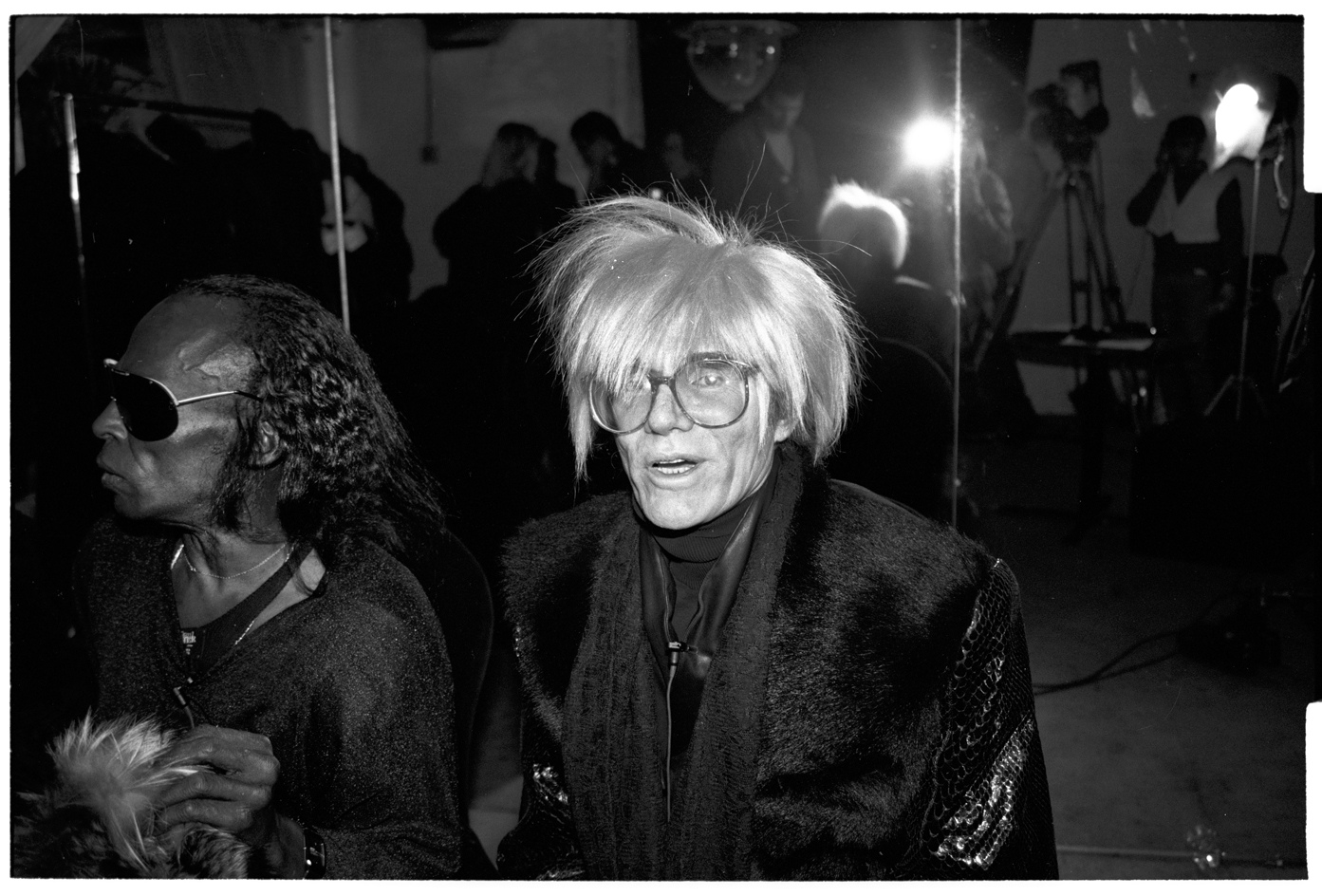 The Andy Warhol Diaries on Netflix reveals his enduring impact on contemporary art
The Andy Warhol Diaries on Netflix reveals his enduring impact on contemporary artWe review the new documentary, and showcase Warhol’s impact on modern culture through three artists: Deborah Kass, Jeff Koons and Glenn Ligon
-
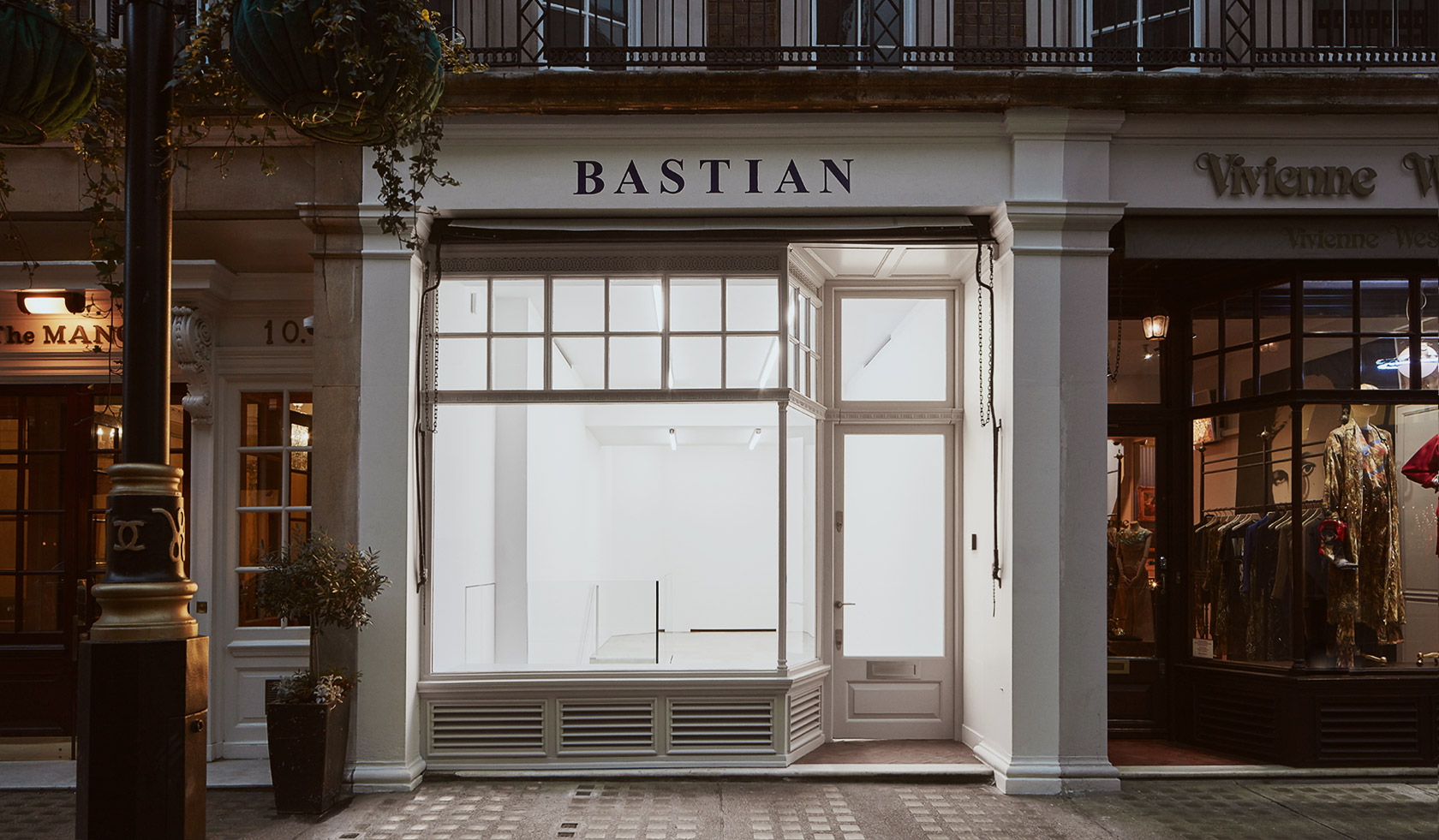 David Chipperfield Architects completes new Mayfair art gallery
David Chipperfield Architects completes new Mayfair art galleryBerlin-based Bastian inaugurates its first international outpost with an exhibition of Andy Warhol’s Polaroids
-
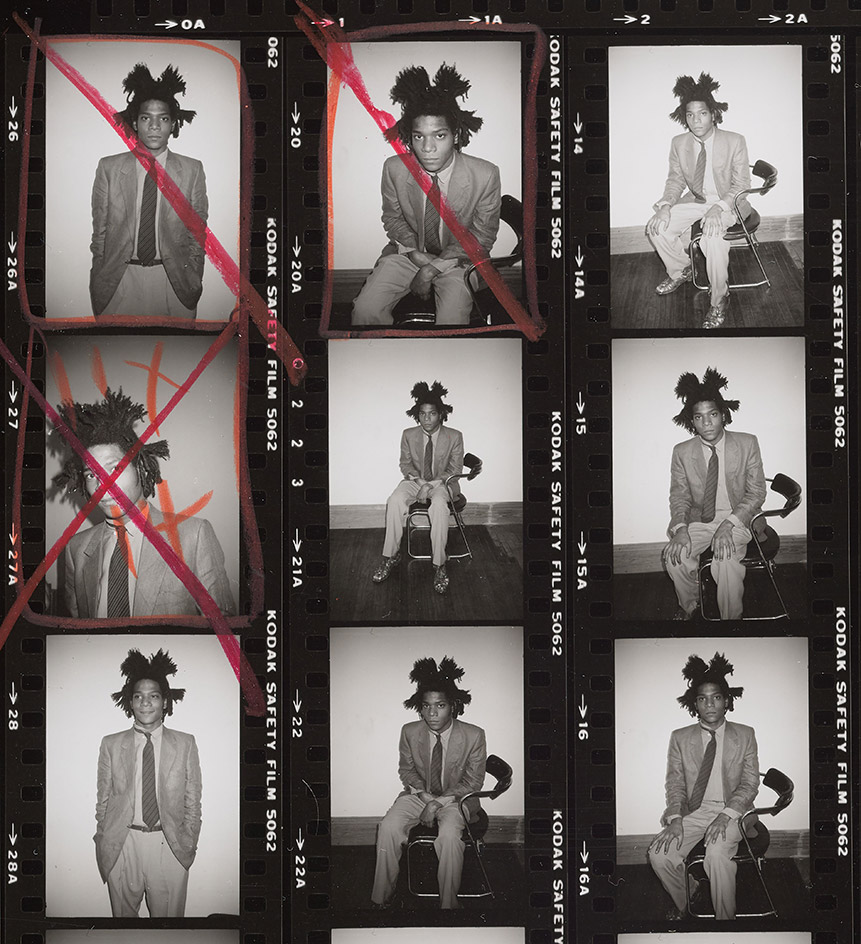 Over 100,000 unseen Andy Warhol photographs to be made public
Over 100,000 unseen Andy Warhol photographs to be made public -
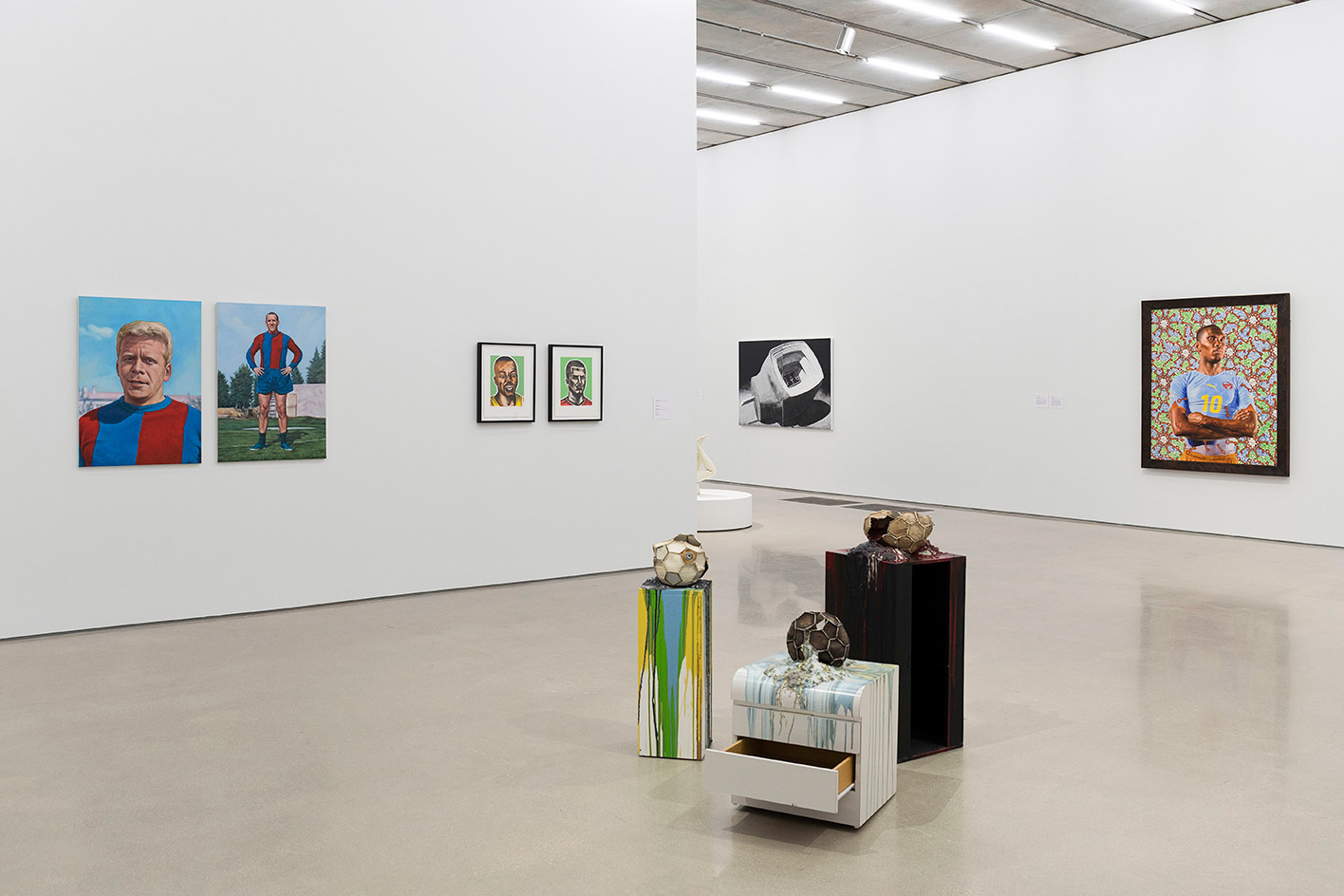 The art of the beautiful game: football moves off pitch and into the museum
The art of the beautiful game: football moves off pitch and into the museum